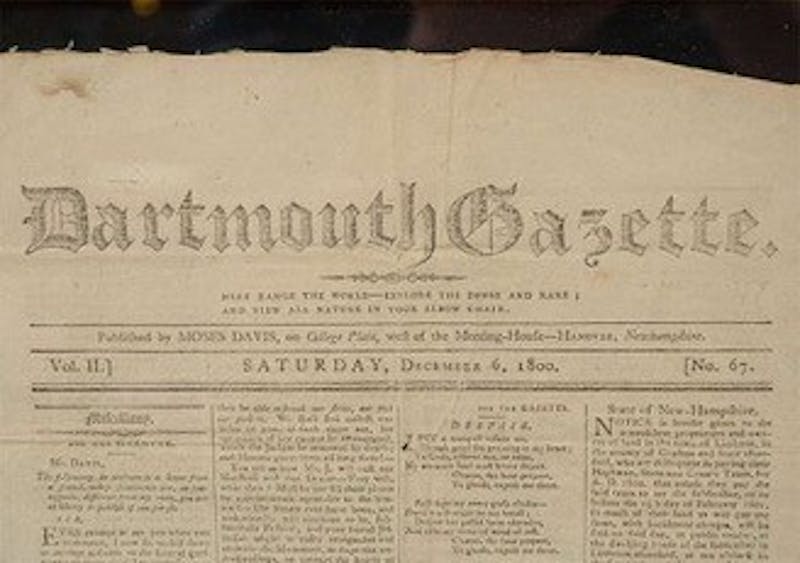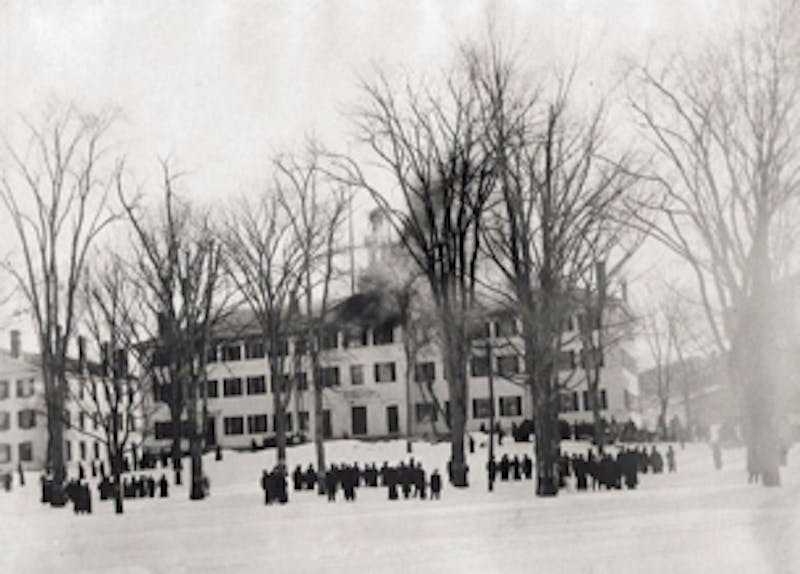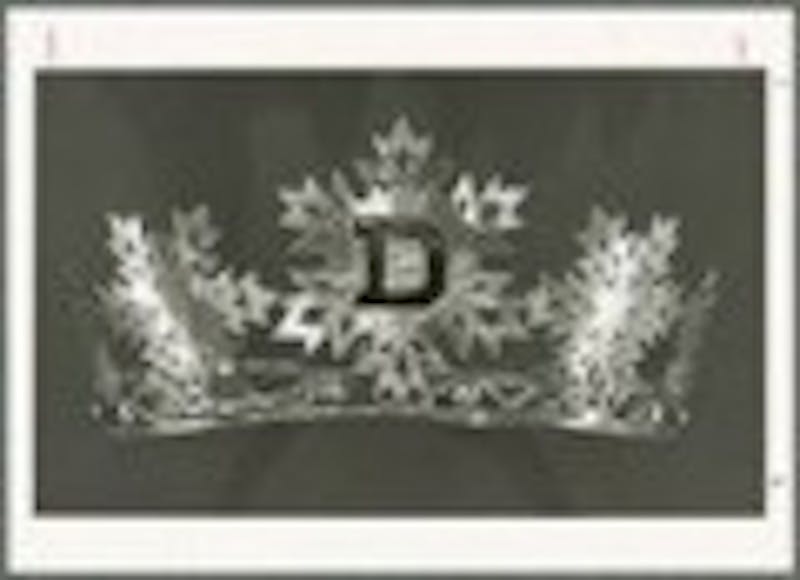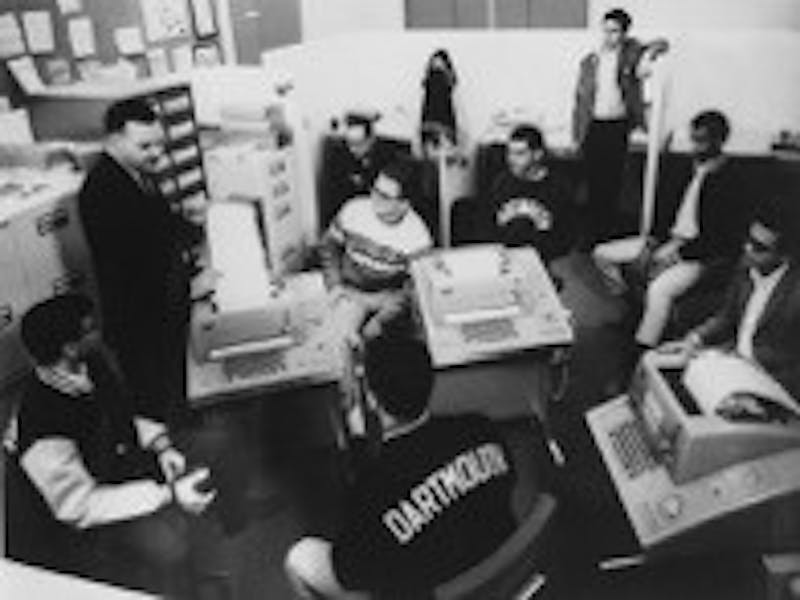1769 College Charter signed, establishing Dartmouth as the ninth college in the United States
1797 Geisel School of Medicine founded
1799 The Dartmouth publishes its first issue on August 27 by Moses Davis under the name the Dartmouth Gazette, establishing it as “America’s Oldest College Newspaper”

1819 Trustees of Dartmouth College v. Woodward was a landmark Supreme Court case in the U.S. which maintained the school’s status as a private institution against the efforts of the State of New Hampshire to make the college public. The College’s success in the case is partially attributed to alum Webster and his impassioned speech where he famously said “It is, Sir, as I have said, a small college. And yet there are those who love it.” Still the case had greater significance beyond Dartmouth; the case ended the debate over private versus public charters, allowing American private institutions to run without state interference and ultimately paving the way for the American free enterprise system
1824 Edward Mitchell became the first African American Student to matriculate from the College.
Dartmouth was a forerunner in the Ivy League for black students; the next college to graduate an African American student was Harvard in 1870
1842 Psi Upsilon is the first fraternity founded at the College
1867 Thayer School of Engineering founded
1895 Dartmouth holds the First Dartmouth Night, a precursor of Homecoming.

President William Jewett Tucker declared September 17, 1895 “Dartmouth Night,” marking the beginning of a coveted century old tradition which was first referred to as Homecoming in 1961
1900 Tuck School of Business founded
1906 Rebuilding of Dartmouth Hall

On a cold February morning in 1904, the alarms of Dartmouth Hall rang out, accompanied by cries of “Fire” as the building burnt down completely in less than two hours. President Tucker declared, “Dartmouth Hall is now a memory. . . but the spirit that created it still remains untouched, and will rise to face the future years.” And so it did. Alumni fundraising was immediate and the new building reopened in 1906 indistinguishable from its predecessor. The iconic white colonial building continues to symbolize the College and the Dartmouth spirit today
1910 Winter Carnival tradition begins.

Called the “Mardi Gras of the North” by National Geographic, over the years, the cherished event boasted notable attendee F. Scott Fitzgerald who was inspired to write a Hollywood screenplay, the “Queen of Snows” beauty pageant, a Guinness World Record for tallest snowman, keg jumping contests, and of course winter sports abound
1934 José Clemente Orozco finishes mural
The Mexican artist painted the famous mural, entitled The Epic of American Civilization, between the years 1932 and 1934
1935 First-Year Trips established
Entirely student-run since its inception, the rite-of-passage tradition started with 16 tripees and now boasts nearly 90% of the class
1943 World War II and the introduction of V-12 Naval Training Program
The Second World War was a transitional era for Dartmouth as the school answered the call to arms and adopted the nation’s largest V-12 program, offering over 2,000 men the chance to become college-educated officers in the Navy. The school’s atmosphere shifted dramatically to operate “like a naval base” where civilian students were outnumbered by military ones, fraternities were closed, and food was rationed
1956 Dartmouth Ski Way opens on December 15
The history of skiing at Dartmouth is a long and important one, and the opening of the College’s own ski areas served as a bedrock for years of a snowy legacy
1964 Dartmouth BASIC computer programming language
Professors John Kemeny and Thomas Kurtz, and a cohort of undergraduates designed the original version of BASIC which made computing accessible to the Dartmouth community and thereafter the entire nation. The innovation was a watershed in the history of computers — Henry McCracken writes in TIME magazine, “ Once upon a time, knowing how to use a computer was virtually synonymous with knowing how to program one. And the thing that made it possible was a programming language called BASIC”

1967 The LSA program introduced with first session in Bourges, France
1971-1972 First Pow Wow and Native American Studies Program begins
In 1971, College President John G Kemeny set out to finally fulfill the school’s initial mission to educate Native Americans.
1972 Coeducation
Dartmouth’s all-male world was shocked when the College began accepted 1,000 women in fall of 1972. Integration was a long and difficult process for female students who were demeaned as “co-hogs” who infringed on the Dartmouth “mystique.”
1972 Year Round Operation and D-Plan
With the acceptance of women came the adoption of “year-round operation” in order to accommodate the larger class size and have less people on campus at once. According to Committee of Coeducation chair Gregory Prince, “Part of the genius of [the plan] was that it was not separable. You couldn’t have year-round operation without coeducation.”
1983 Nelson A. Rockefeller Center for Public Policy was born
1988 Organic Farm proposed
Beginning as a student project proposal for an ENVS 50 course, and implemented in the winter of 1944, the “O-Farm” now grows more than 2,000 pounds of produce annually.
1999 Dartmouth becomes the first liberal arts school in the U.S. to own an MRI scanner strictly for academic research.
2007 Democratic Primary Debate hosted
2016 Dartmouth is the first national research university to graduate a majority-female engineering class.
The average proportion of women earning engineering degrees hovers around 19 percent; Dartmouth boasted 52 percent



